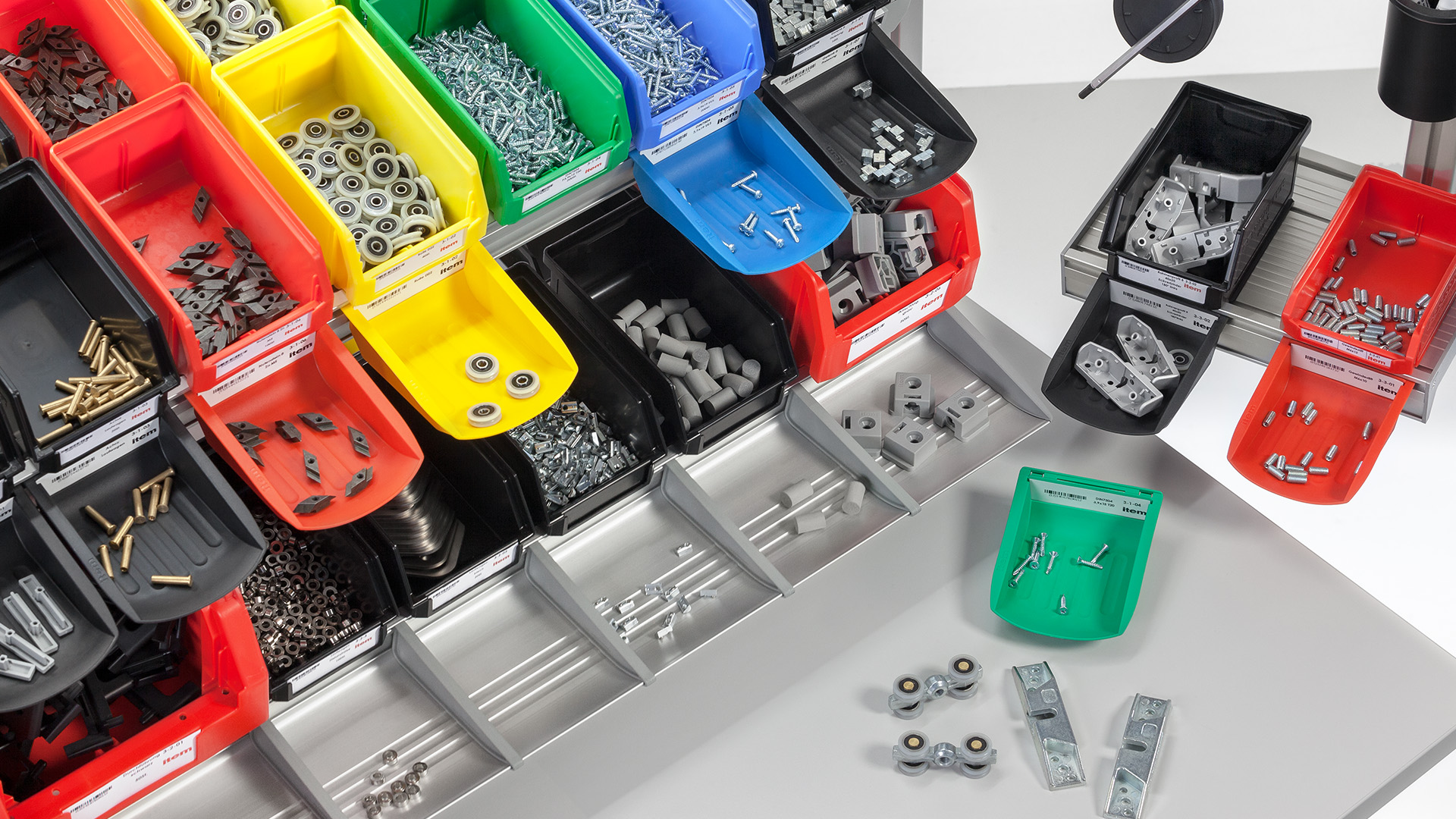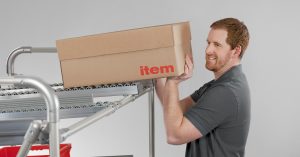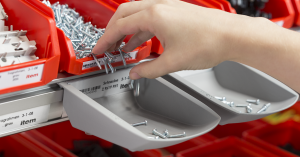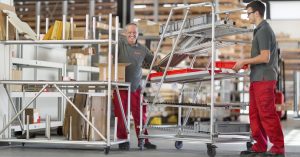How can you improve on just-in-time? The solution is as simple as it is effective.
High stock levels are a huge cost factor, so avoiding them is a key element of the anti-waste message conveyed by the seven Muda. Storing materials and goods always ties up capital and brings with it the risk that they could be damaged.
The just-in-time method is a proven logistics tool that tackles this problem by ensuring suppliers cater precisely to the needs of manufacturing companies. However, it does not solve the problem that arises when the specific sequence of deliveries is all-important. What should you do then? One suitable, lean solution is the just-in-sequence method.
Basic principles of just-in-sequence
Just-in-sequence (JIS) is a logical extension of the just-in-time (JIT) principle. It is not just about supplying the customer with the right quantities at the right time, it’s also about doing that in the correct sequence. For example, the following applies when using the JIS method: Besides ensuring that the right number of components or modules are supplied at the right time, the supplier also makes sure that they are delivered in the same order that they are installed. As a result, the customer’s assembly sequence determines precisely how supplies are delivered.
JIS is particularly helpful when products are being manufactured for further processing, such as in the electronics and automotive sectors. The production sequence is usually established a number of days before assembly work starts, which means that just-in-sequence can also be implemented over long distances in the meantime (long-distance JIS). Naturally, more detailed sorting of this type fundamentally requires closer communication between supplier and customer, which is usually handled through EDI (electronic data interchange) systems. EDI systems enable two companies to share standardised business documents automatically and electronically, which saves a great deal of time.
JIS – benefits and criteria
The immediate advantage of just-in-sequence for workers on the production line is that it doesn’t generate any extra work for them. They can use the parts supplied to them straight away, without having to waste any time sorting through deliveries to find the part they need next. Since the capital tie-up associated with high-quality and/or bulky parts is well above average, these are particularly suitable for JIS, which can considerably reduce warehouse stock. This in turn lowers storage and personnel costs and minimises the risk of goods being damaged while in storage.
When it comes to material that involves longer shipping times, JIS is of course less suitable – as is the just-in-time method, too. The longer the shipping distance, the higher the probability that unforeseeable circumstances will disrupt the process chain. Since the entire supply chain is involved, customers also have to respect corresponding quality guidelines – although the greatest responsibility lies with the supplier. Incidentally, that is also why suppliers in the automotive sector are often located in the immediate proximity of the production facilities they serve. This physical closeness enables them to significantly reduce their delivery times and ensures they can react extremely quickly to any transport or sequencing problems.





